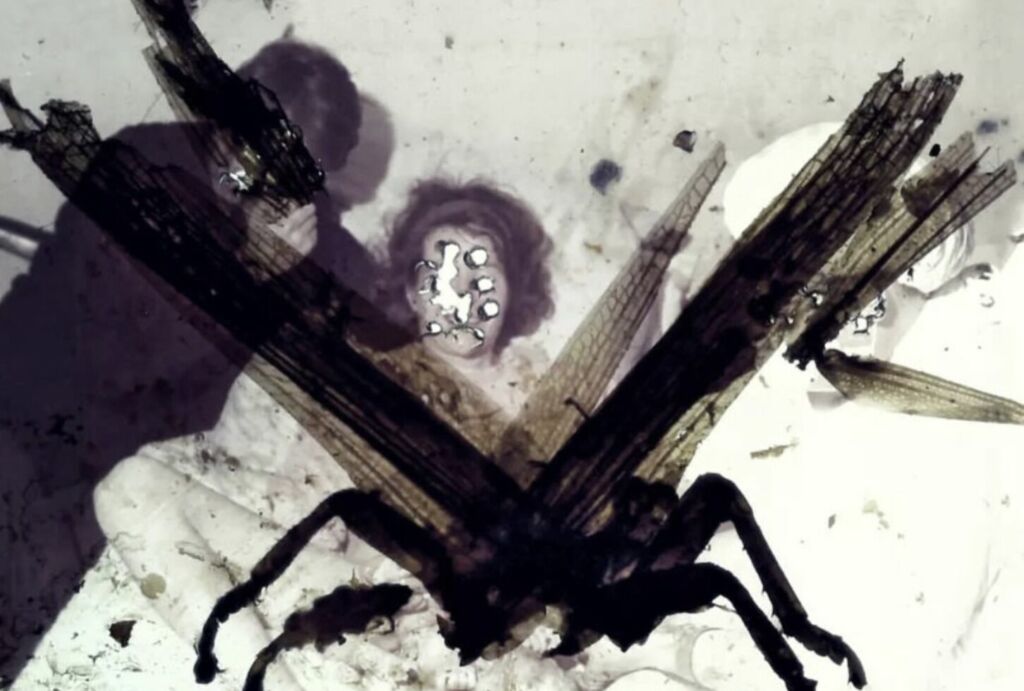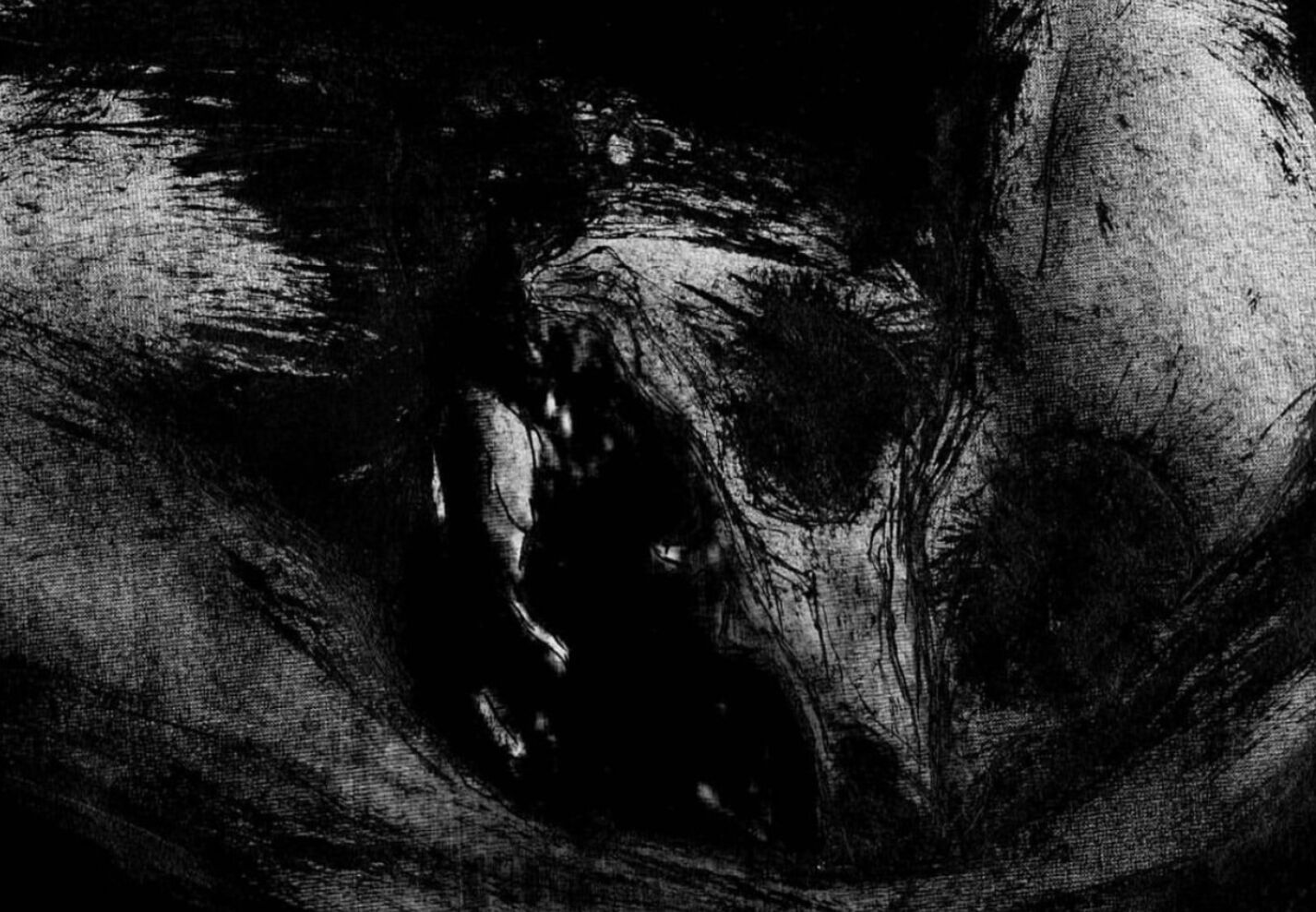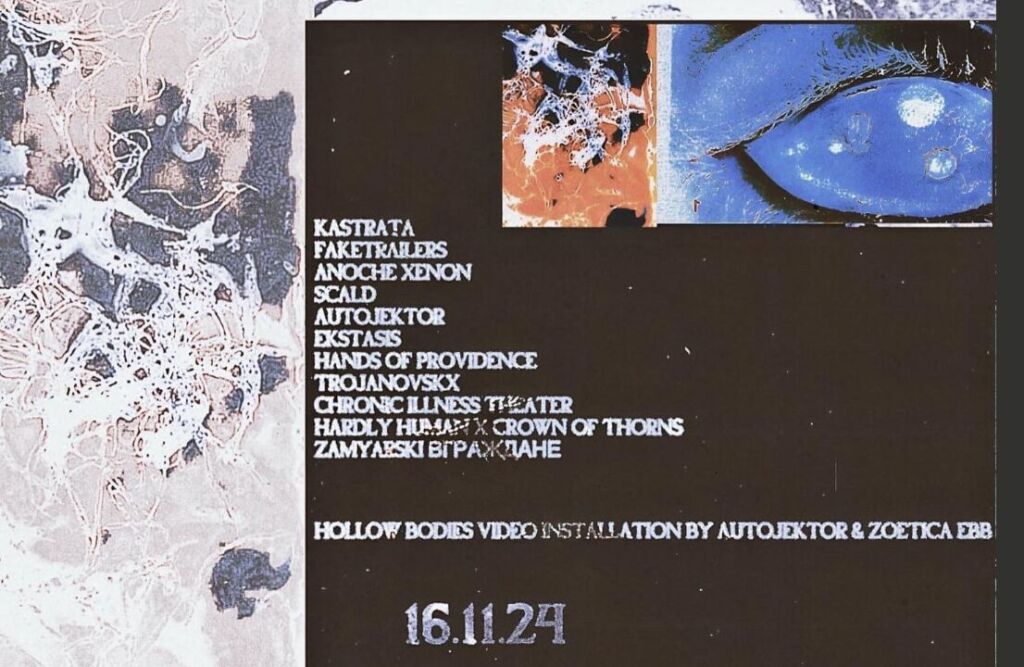Text by Piotr Bockowski

Aborted speculation, informed by a mutagenic array of strategies of online image creation. Do media contribute to changes in human reproductive strategies, shifting from sexual coupling to postsexual replication?
Voyeuring Autojektor’s Hollow Bodies video installation at Chronic Illness 23 coming up on the 16th of November fertile with parasite brood, undead miscarriage, disfigured corporeal accelerations, perverted vermin or faces eaten out, wounded and externally digested; it is vital to define media not only as material agencies that facilitate communication in an abstract sense (human and nonhuman) but also as living biological forms of corporeal transmutation that change our bodies into no-longer-human entities.
Media connect life forms, but at the same time, they have always been more-than-passive technologies of communication or information storage. Looking at media in their peculiarly experimental form of bioart, it can be argued that media perform as material agencies which make life forms grow and reproduce. Creating environments for the emergence of human and nonhuman hybrids beyond sexual reproduction, mediations come to life also as transsexual mutations. Autojektor at Chronic Illness invites us to interpret the moving image art in terms of biomedia, considered as non-human forms engaged in reproducing no-longer-human bodies.


Transhuman bodies online multiply unfinished processes, disperse intermediate stages of development, break apart organisms, perpetuate disconnected fragments and splice or decompose tissues in a non-regular manner. This process is directly related to the ‘effortless’ circulation between the ever-growing forms of image media. The bodies of techno-humanoids are characterized by a lack of coherence and by repeated becomings of performative transgressions.
The price for the growing intensities of bodily performances is the unprecedented loss of the body’s concrete materiality and material objectivity. Nothing is as imaginary as the material body. Circulating, fluid, borderless, with no certain boundaries or predetermined history, it seems. And yet, that flux radiates a different “alien” material intensity, which is embodied in Autojektor’s practice through the celluloid film exposure to rotting processes of meat, cereal or mould, as well as hand-wounding of the images. Together with digital mediations of the Internet, Autojektor’s image digestion and assault align materially and conceptually with the proliferation of countersexualities.
Bred apart from the Internet, various androgynous sex codes, defined online as gender fluid, switch, agender or trans, are a direct consequence of the changeability of techno-communication environments. Through her visceral image mutilation, Autojektor performs those different modes of post-sexuality in extreme mutant figurations that allow them to breed multiple oddkin bodies through acts of orifice mutilation.
Autojektor’s Hollowed Bodies are a form of biotech mediation that is undoing the productivist ideology of political economy, in a way evoking a desired antinatalist species apart from traditions of family cultures.
Transgressions of human biological reproduction are guarded off by the rigid sexual dualism of many traditional cultures and punished according to repressive ‘family values’ of sexual reproduction that support the exclusivity of religious, national or racial prejudices. Humans use media networks to form temporary dynamic alliances of wasted bodies that subvert their marginal social position by interpreting their stigma as a creative advantage.

The initial meaning of ‘queer’ is ‘rotten’ and thus excluded, but nowadays this ‘queer rot’ is widely applied by new media subcultures in association with culturally fertile activities, which are massively introduced into the mainstream culture of the Internet. Anti-reproductive communities are on the rise thanks to network communications and they replicate themselves via image manipulation of their bodies. Growing fascination with the aesthetics of mutation and androgyny offers an extremely attractive imagination for future cultural narratives tackling the accelerating issue of overpopulation.
The futuristic longing to become transsexual is expressed in a prediction that ‘the future belongs to those dwelling at the borderlines, to those who make of their bio-social-ecological abode the hybrid, the intermediation, the splice’. Queer online culture can thus be said to produce stem cells for posthuman technomutants, inspiring sensitivity to nonhuman life processes. With their imagination of radical, trans-species alliances, they seek a way out of creeping techno-dystopias, which drive the civilization towards self-extinction.
After the arrival of the Internet, sexually ambiguous androgynous looks are common and don’t define gender anymore. This transition opens up new cultural forms in the 21st century when media embrace ambiguity and celebrate androgynous bodies that defy sexual stereotypes. Moreover, it may be that the media culture not only creates the desire to consume androgynous images but also that transsexualism may actually even be referred to as a condition tailor-made for our surgical-technological age. Media mutations and biotechnology both embrace transsexuality. Their crossover is particularly fertile for image-shapeshifting potentialities of rotten bodies such as Autojektor.
Chronic Illness 23 is on 16 November 2024 in London. Tickets here.






